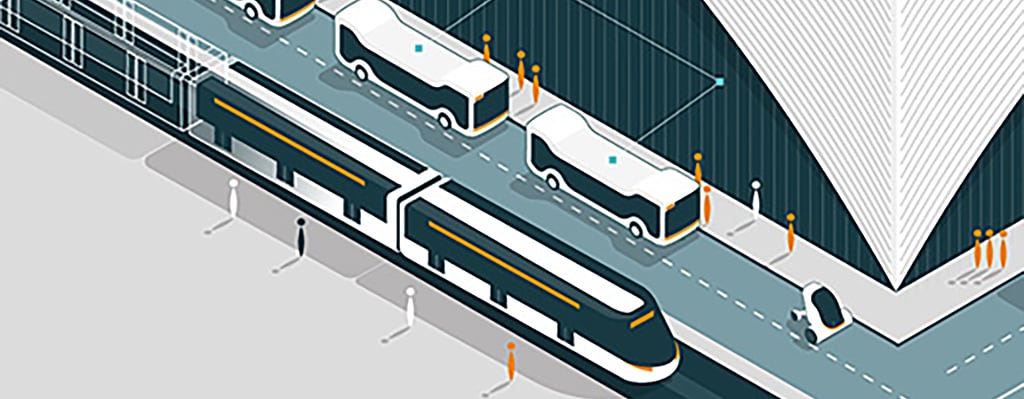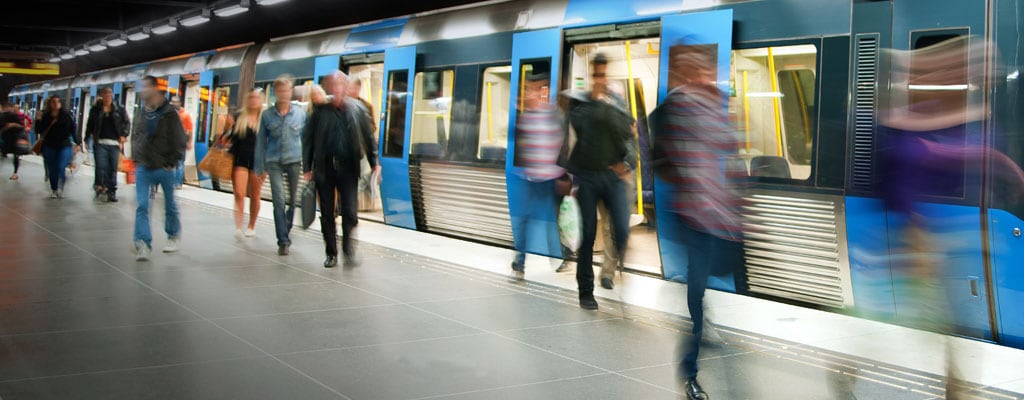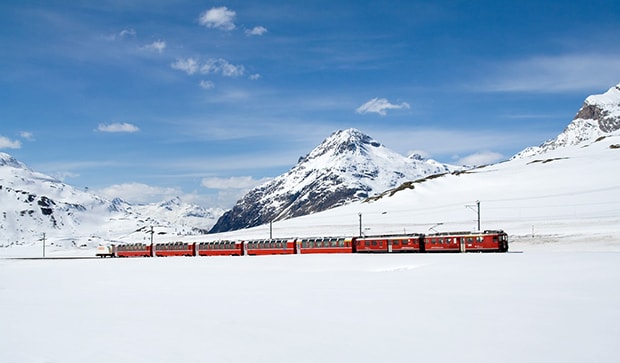
Trend Insight
Fast Lane to the Future
Forget about running to catch a bus. In the near future, the bus will catch you.
Author
WIRED Brand Lab in collaboration with TE Connectivity
Image credit: Thomas Porostocky
Orginally published on Wired.com
The future of mass transit. Meet Olli, an on-demand driverless vehicle designed to make quick local trips and bring hurrying commuters to transport hubs. You’ll summon the electric-powered Olli with a quick call: If you have a smartphone, you are a bus stop. Created by Local Motors and powered by cognitive learning technology, the bus will be packed with sensors and capable of carrying up to 12 people. Olli has already done a trial run on local private roads around Washington, DC, and is currently appearing at auto shows as part of a world tour.
Olli doesn’t look futuristic: It’s a window-filled rectangle that's more like a people mover at a theme park—but it provides a glimpse of things to come. The next generation of public transport will involve not only steel, pavement, and rails but also semiconductors and wireless signals, marking the most dramatic shift in the way people move en masse since the early days of the auto, experts say.
“It’s all about the connected journey,” says Wes Gilbert, business development leader for rail at TE Connectivity (TE). “How can all these forms of intermodal transport be linked to provide a full complement of services? It’s all about gathering the data, coordinating the services and getting travelers where they want to go.”
Within a matter of a few years, a range of new offerings will do just that, blurring the line between public and private transportation and offering people efficient and personalized services.
It couldn’t come at a more critical time. While the private auto is often seen as the ultimate symbol of individualism, traffic jams now regularly choke daily commutes, fraying nerves and straining budgets. One result: The demand for public transportation is increasing. In fact, ridership has gone up 20 percent in the past decade, reaching its highest levels since 1957, according to the Federal Transit Agency’s latest "National Transit Summary & Trends" report. (In 2014, says the American Public Transportation Association, Americans took 10.8 billion trips on public transportation.) Along the way, passengers have spent approximately $15 billion a year in fares.
Good public transit has many advantages. In 2011, it saved Americans in urban areas 865 million hours in travel time and 450 million gallons of fuel. It also makes economic sense. Every $1 billion invested in public transportation supports and creates more than 50,000 jobs. And home values are 42 percent higher on average if the real estate is located near public transportation with good service.
But as population centers shift and more people want to live in cities, transit systems are starting to show their age (2007 is usually considered the year when city dwellers formed the majority of the global population for the first time). Earlier this year, officials in Washington, DC, introduced the SafeTrack program, which shuts down major portions of the Metro system in rolling closures as crews move in for repairs. The move is needed because a patchwork of maintenance fixes, done over decades, is no longer sufficient. Three-quarters of a million people use the system each weekday. Cities such as Detroit, New York, and Miami are also struggling with old public transport infrastructures. “The useful life of the first generation of investments is ending,” says Robert Puentes, president and CEO of the Eno Center for Transportation. “It’s a big national problem.”

"Good public transit has many advantages. In 2011, it saved Americans in urban areas 865 million hours in travel time and 450 million gallons of fuel. It also makes economic sense. Every $1 billion invested in public transportation supports and creates more than 50,000 jobs."
A constellation of data
With the existing public transport system already strained in many areas worldwide, it’s not enough to queue up more buses, trains, and streetcars. Leveraging the newest tech (and the data it produces) is the key to traveling smarter. By utilizing more and richer data that captures traffic flow, weather, parking, road conditions, and more, transportation authorities can improve system performance and minimize traffic congestion, which in turn improves travel times and reduces carbon emissions.
Intelligent transportation systems are already used for controlling light rail and subway trains, making it possible for more cars to be on the tracks during rush hour without risk of accidents. Beyond managing traffic in mass transit systems, improved sensor technology and analytics allow operators to perform more predictive maintenance, detecting and addressing potential component failures before they actually occur. By collecting, channeling, and intelligently evaluating data, officials will be able to improve service and maintenance processes, as well as safety, in the rail sector.
Traveling smarter
Terry C. Bills, global transportation industry manager of ESRI, says that technology must always serve the rider. “What’s important is that service is on time, clean, and fast,” he says. It’s the beginning of what Lyft cofounder John Zimmer refers to as “the third transportation revolution” or “the point where transportation as a service becomes more enjoyable and affordable.”
Early successes in this integrated area are starting to appear already. Officials in the province of Gelderland in the Netherlands, for instance, teamed up with global automotive software supplier Elektrobit to launch WEpods, a project using the EasyMile EZ10 shuttle. Riders hail the driverless shuttle using a smartphone app, and the shuttle runs on a set loop around the campus of the local university. It’s also linked to a nearby rail station.
There are still some speed bumps: Both sides must agree on common interfaces, principles, and business models to facilitate the exchange of data and information from the road vehicles to the traffic management and control centers. But the rewards are huge: More consolidated information means a more reliable and efficient solution.
Very rapid transit
In addition to improving what’s already out there, traffic planners are dreaming of the next big thing.

Moving walkways. The London Underground’s 17-mile Circle line, a loop through the city center, has a reputation for being slow and clogged with tourists. Local architecture firm NBBJ thinks walking would be faster—if you gave passengers a little help. First, get rid of the tracks and replace them with three adjacent moving sidewalks. Riders would enter through stations as usual, but instead of waiting for a train they’d step onto the nearest lane, which would move at 3 miles per hour, a typical walking speed. A middle lane would go 6 mph, and a third zip along at 9 mph. In the tunnels between stations, each lane could speed up. At max speed, a traveler could be "walking" at 15 mph. Without the need to stop at each station, NBBJ says, one could do the loop in 55 minutes—five minutes faster than the train.
Ultrafast high-speed “rail.” Hyperloop is a bold plan for a transit system that would transport people in capsules at great speeds over long distances. The capsules would travel swiftly through a nearly airless aboveground tube stretching for hundreds of miles. Powerful magnets in the tube would float the pod as it hurled nearly friction-free to its destination, attaining speeds of 700 mph or more. The concept was unveiled three years ago and described during its announcement as “a cross between a Concord, a railgun, and an air-hockey table.”
“The Hyperloop will not only revolutionize how we commute but how we live and work,” says Jim Toth, vice president of corporate technology at TE Connectivity. "People can live in San Francisco and travel daily to Los Angeles for work in just half an hour, with departures every few minutes. Or take in dinner and a baseball game in one city before heading home to the other. When you also consider the impact on commerce, the challenge of building this fifth mode of transportation is one that many engineers are eager to take on.”
About two dozen passengers could travel in a Los Angeles–San Francisco capsule. Thinking more broadly, a tube network mounted on pylons could crisscross the country within a decade. The goal is to have a fully operational system by 2020.
While SpaceX's leadership has an enviable track record of leading bold and innovative teams, they felt the pod design could benefit from the wisdom of the crowd and announced an open competition to design the passenger carriers. SpaceX engineers would determine the winner. TE has joined in the competition through a partnership with rLoop, which is composed of members of the Reddit SpaceX group and is the only non-university team in the competition.
Members of the online rLoop team have diverse technical backgrounds and are spread throughout the world. More than 140 engineers from over 14 countries designed their pod in a virtual environment through communication platforms such as Slack. They are now manufacturing the pod at TE's Silicon Valley facility, using donated products and engineering expertise from the company.
Emerging high tech plans like these may be the solution to an aging transportation infrastructure, offering revolutionary replacements where funding is readily available, and helping to improve, maintain and evolve existing systems when funding is more constrained. It’s clear that it’s time to think expansively, but increasingly experts say it will involve a blend of the old with the new.“ Long-term, the key is sharing data between the different services, making what we have and what’s coming next communicate efficiently,” Gilbert says. “That’s the secret to setting up the operations of the next generation of transportation services.”
Recent technological innovations are already reshaping how we traverse our cities—but that’s only a small part of the story. Be sure to check out TE Connectivity’s Future of Transportation hub for more stories exploring what’s next in mobility.


